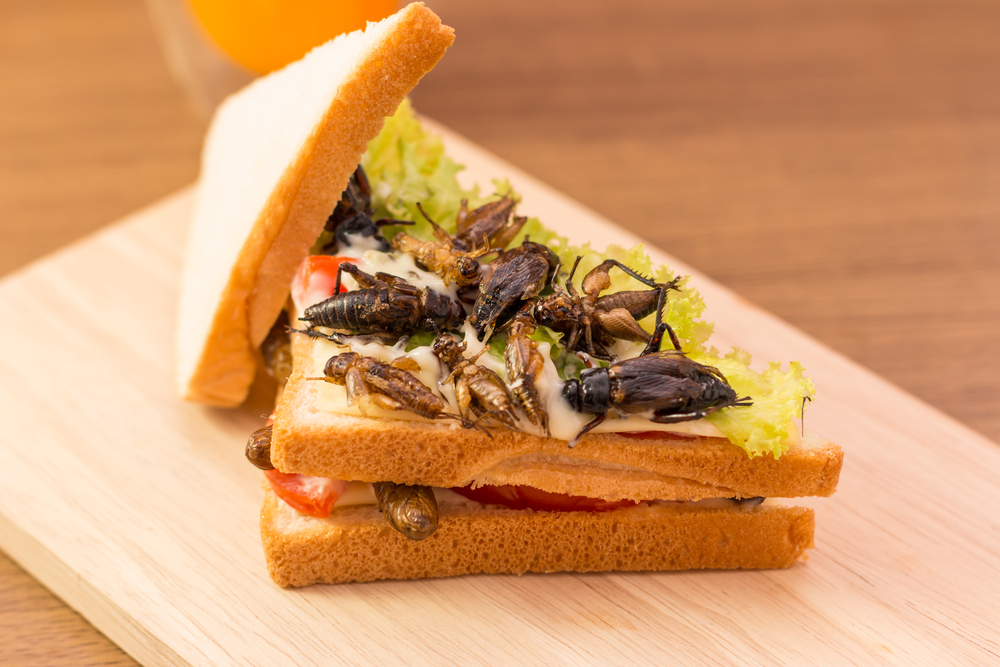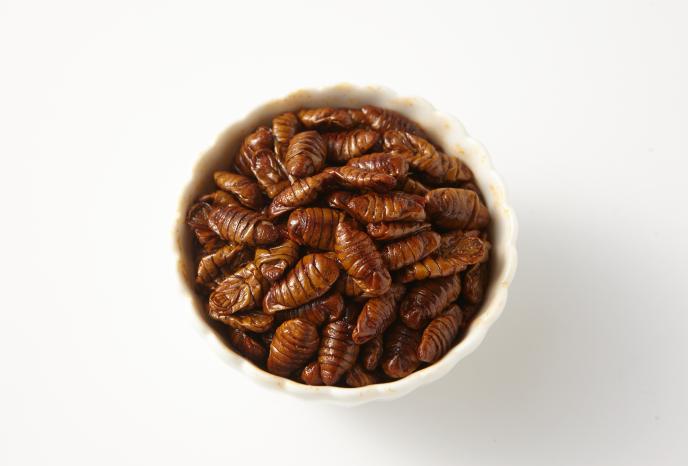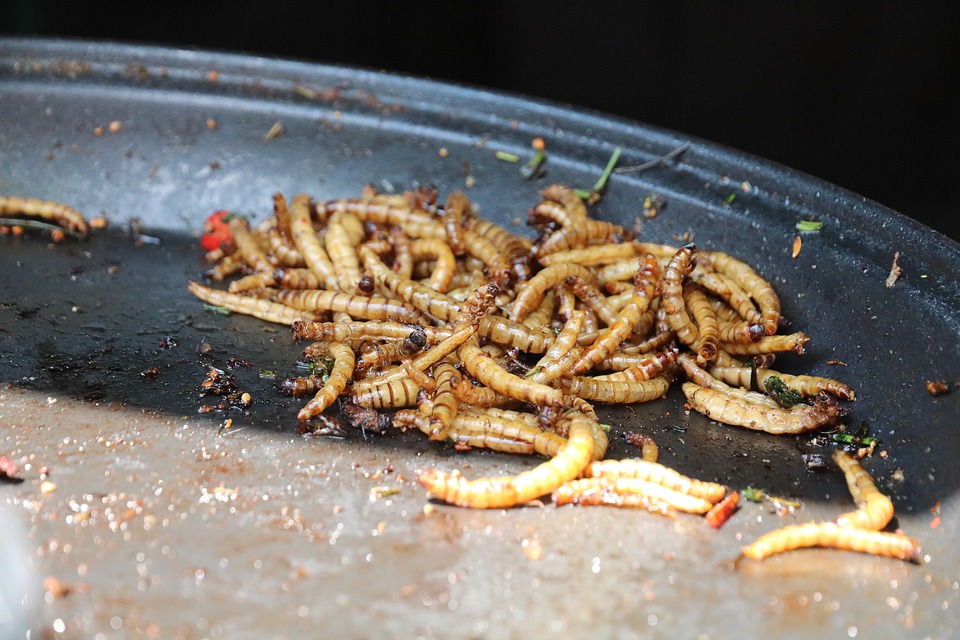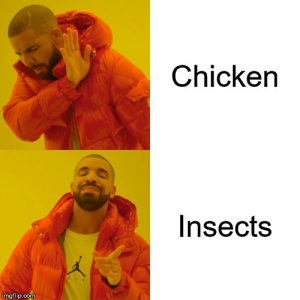Insects are awesome. They pollinate, decompose, and are even a reliable food source! Insects have been eaten by humans since time immemorial and soon they’ll be hitting supermarket shelves!
Insects are extremely underrated and undervalued. We call them pests or creepy crawlies, and our first instinct when we see an insect is often to kill it or run away. However, insects are indispensable for many different reasons.
Insects are best known for being pollinators, without which life as we know it would cease to exist. They are critical for decaying organic matter and replenishing the soil with nutrients, but insects can also be used as food, an act referred to as entomophagy (Greek: Ento=insect, phagy=to eat). Many animals, such as birds, spiders and insects themselves, are entomophagous.![]()

History Of Human Entomophagy
Human insectivory or human entomophagy refers to humans eating insects, and has been prevalent since prehistoric times. Evidence of ants, beetle larvae, tics and lice have been found in coprolites (fossilized dung) in the caves of Mexico and the United States. Today, in many regions, countries and cultures, such as Sub-Saharan Africa, South-East Asia and Latin America, insects are farmed, processed, packaged and sold in markets and widely enjoyed. In more rural areas, where there may be fewer conventional food choices, insects can bridge that dietary gap!

Also Read: Does An Insect “Farm” And Raise “Cattle”?
Are Insects The Future Of Food? The Need For Alternative Food Sources
As the population of the world grows and poverty rates rise, the pressure to fill every single mouth will increase tremendously. Humans depend heavily on traditional protein options, such as red meat, fish and poultry. Rearing such livestock in numbers that are sufficient to meet increasing demands (which are expected to double between 2000 and 2050) places tremendous pressure on our global resources.
Currently, 70% of agricultural land is being used to rear livestock (Source). Traditional livestock is also a significant contributor to greenhouse gas (GHG) emissions and the production of ammonia. Manure from that livestock contaminates water sources with pathogens and toxins. These challenges will require creativity and innovation to solve, but one potential solution revolves around insects.
Insects have a high food-conversion efficiency, which means that they need less food than other creatures to convert it into body mass. To cultivate 1 kg of animal protein, livestock must be fed 6 kg of plant protein (Source). On the other hand, approximately 1.7 kg of plant protein is required to produce 1 kg of live animal weight in crickets.
Furthermore, Nakagaki and DeFoliart (1991) (Source) estimated that about 80% of a cricket’s body is digestible, whereas only 55% of chicken and pigs, and 40% of cattle is digestible. Looking at these facts, it’s easy to understand the advantages of eating insects.
Insects are also less picky eaters than their vertebrate counterparts and require less water. Insects can be fed a diet of organic side waste. Organic side streams are byproducts generated by the agriculture, food, landscape maintenance, and bio refinery industries.
Some examples of organic side streams are grass, manure, wood waste, etc. This means that edible insects, such as the yellow mealworm, could not only serve as food, but also help in tackling organic waste. With this being said, there is still research being done on the effects that such feeding strategies would have, not only on the insect, but also considering diseases and microbial growth.

Also Read: What Would Happen If All Insects Vanished From The Planet?
How Nutritious Are Insects?
The nutrient profile of insects varies depending on the species and their stage in the life cycle. The main nutrients in insects are fiber, protein, and fats. For animals as small as insects, they have a high protein content, comparable to beef or chicken. A protein content evaluation of 100 insect species found that the value ranged from 13 to 77%.
Insects are also rich in mono- and polyunsaturated fatty acids, making them a potential source for omega-3 and omega-6 fatty acids. Some insects are good sources of vitamins, such as pantothenic acid and riboflavin, as well as other micronutrients, such as copper, iron, magnesium, manganese, phosphorus, selenium and zinc.
Can We Eat Any Insects We Want?
Just as we can’t go around eating every vertebrate we see, we can’t just eat any insect off the ground either. Some insects produce toxins that are dangerous to humans if consumed, some might cause disease, others might not be tasty, and some might just not be overly nutritious.
About 2000 insect species are known to be edible to humans. According to the University of Wageningen’s World list of Edible insects, beetles (Order: Coleoptera) are the most commonly enjoyed insects, with caterpillars (order: Lepidoptera) coming second, followed by ants, bees and wasps (Order: Hymenoptera), Grasshoppers and Locusts (Order: Orthoptera), and True bugs (Order: Hemiptera), in that order.
Just being able to eat an insect is not enough though. It must be feasible to farm the insect using the same standards of sanitation and health that we use for livestock rearing. The nutritional benefits must justify the cost that goes into farming these creatures.

Also Read: Beetle Diet: What Do Beetles Eat?
Conclusion
To many people in westernized countries, the ideas of eating insects is disgusting, but for many populations around the world, insects could be an answer to their food woes. It is becoming abundantly clear that we need to rethink the way humans interact with food, especially considering the fact that the United Nations projects that by 2050, the world’s population will reach 9 billion people. Considering our growing population and the imminent threat of climate change and its effects on agriculture, the survival of our species will require ingenuity, as well as a few six-legged delicacies on our plate!
How well do you understand the article above!

References (click to expand)
- Kouřimská, L., & Adámková, A. (2016, October). Nutritional and sensory quality of edible insects. NFS Journal. Elsevier BV.
- List of edible insects of the world (April 1, 2017) - WUR. Wageningen University & Research
- (2013) Edible insects: future prospects for food and feed security. Wageningen University & Research
